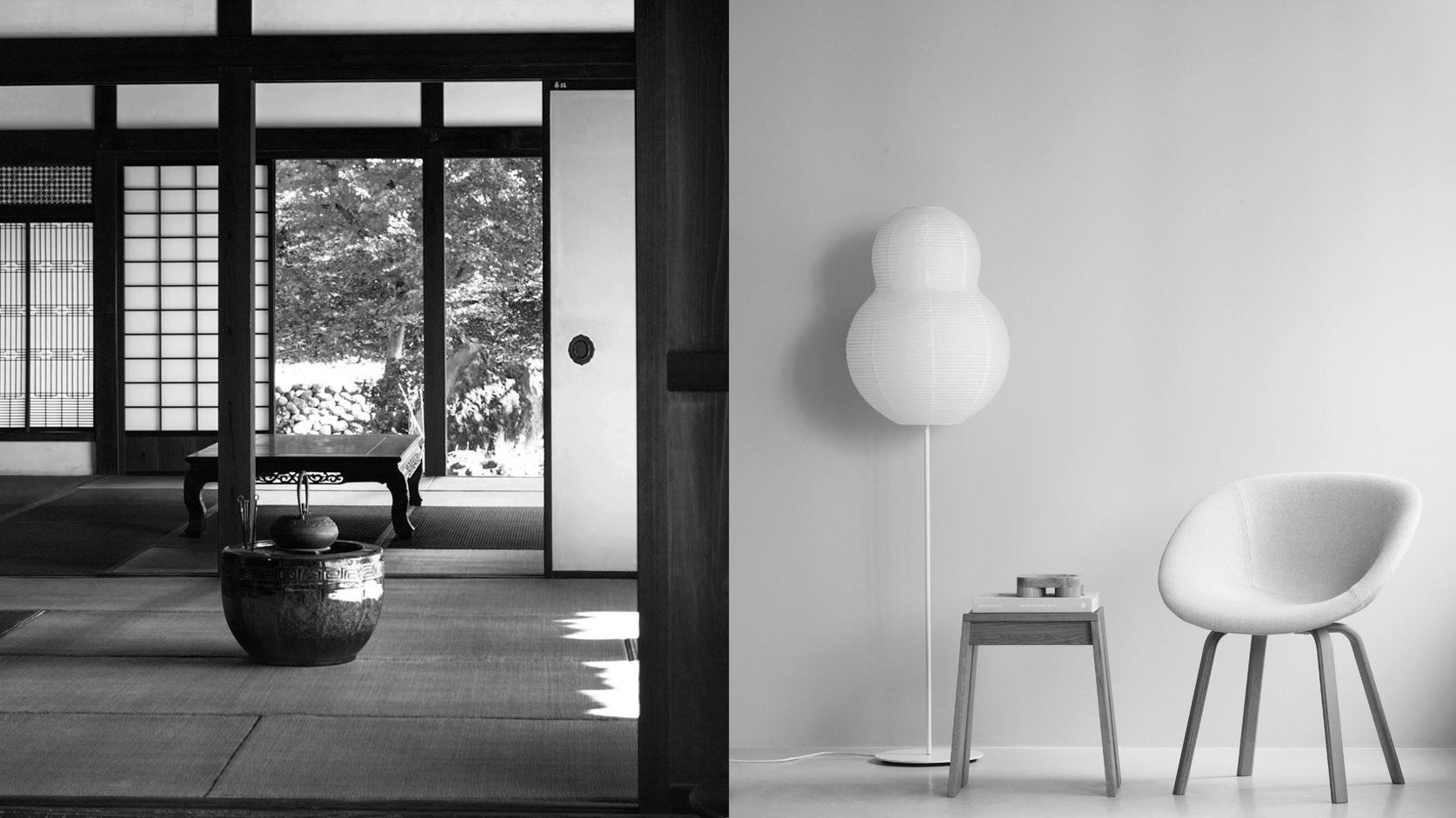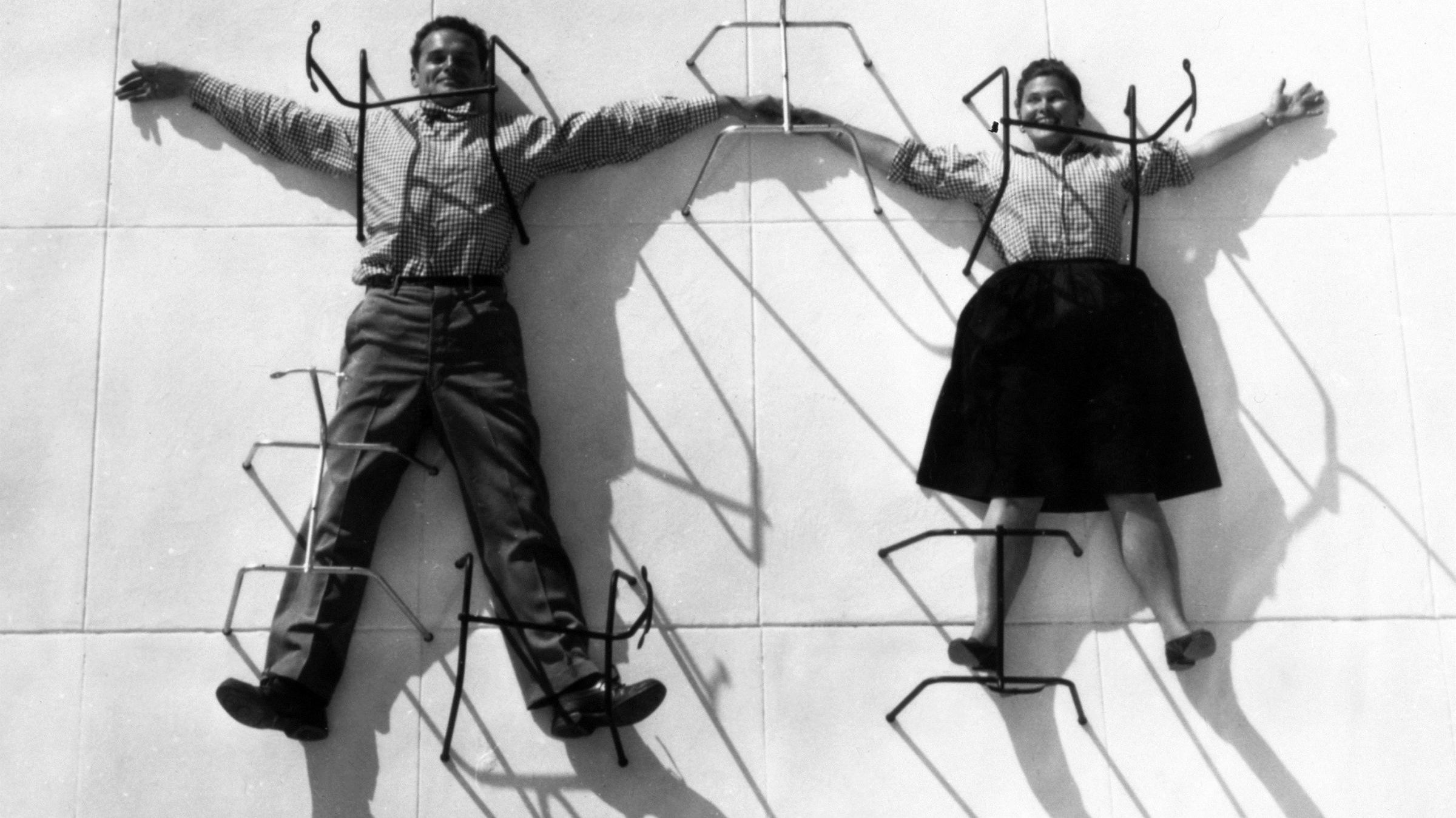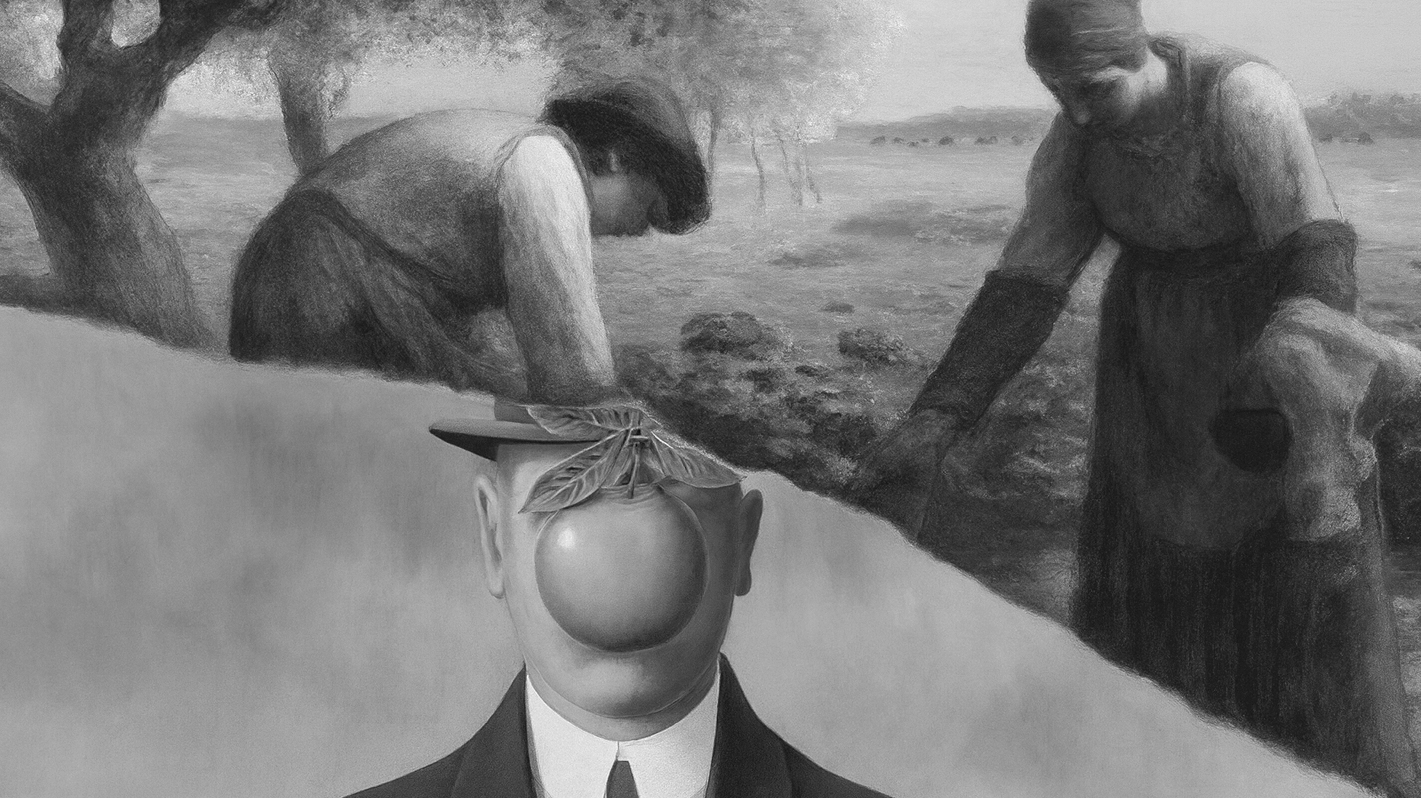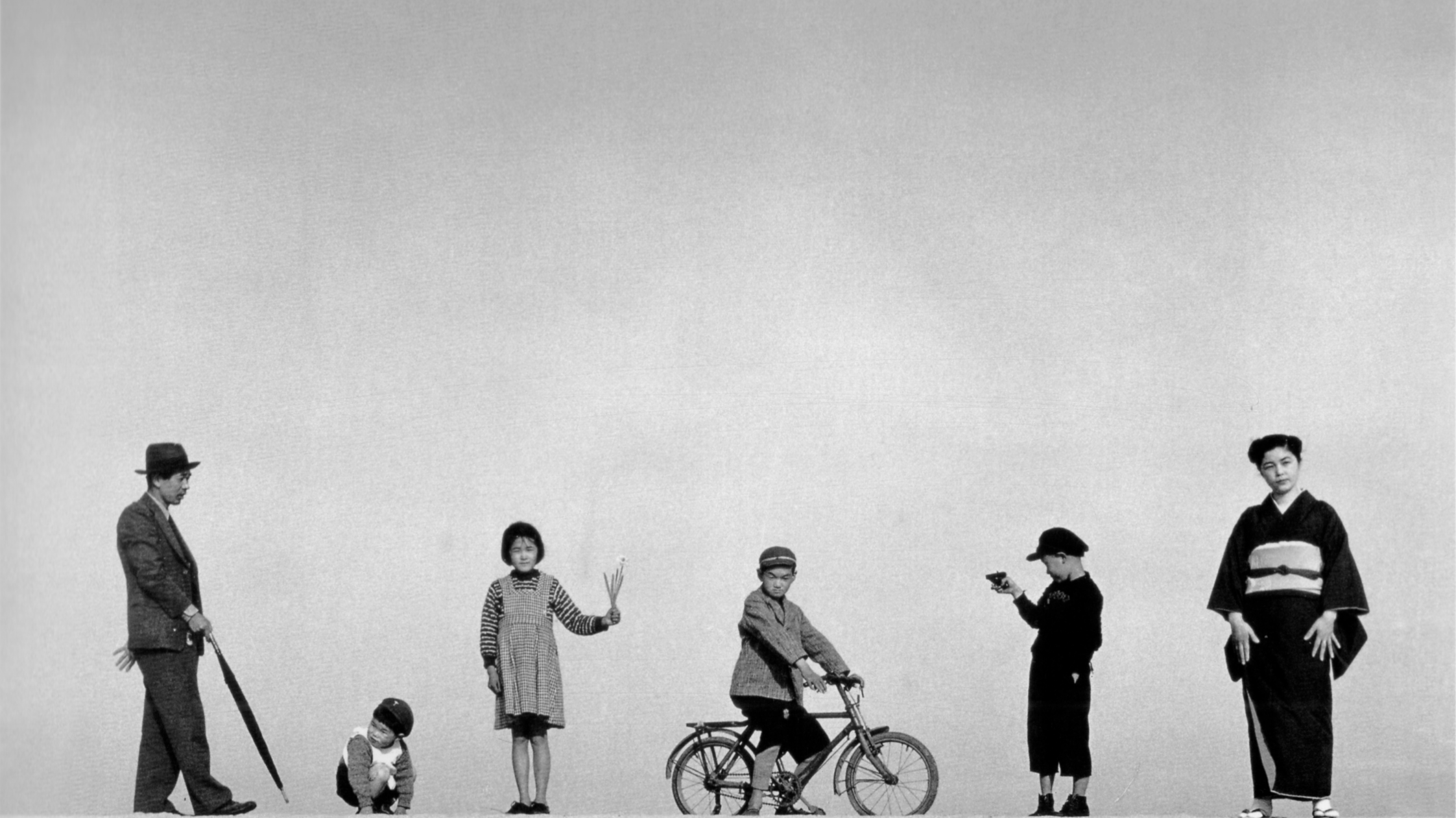Public reactions to Surrealism have long been divided. While some people are drawn to its dreamlike atmosphere and imaginative vision, others find its strange imagery and illogical compositions difficult to understand. Because Surrealist art often challenges traditional ways of seeing and interpreting the world, it can feel unfamiliar or inaccessible at first, which may discourage deeper engagement with its meaning.
In this article, we invite you to look beyond first impressions and take a closer look at the ideas behind the Surrealism art movement. With time and understanding, your view of Surrealism may shift and reveal unexpected depth and insight.

Philippe Halsman, Dalí Atomicus, 1948. Photograph. © Philippe Halsman / Magnum Photos
The Origins and Meaning of Surrealism
Surrealism is an influential art and literary movement that emerged in Europe after World War I. Led by the poet André Breton, the movement sought to free human thought and creativity from the limits of logic, reason, and social convention. Artists and writers associated with Surrealism believed that the unconscious mind, revealed through dreams, imagination, and unexpected connections, offered a deeper and more authentic truth than rational thought alone.
Rather than representing the world as it appears, Surrealism creates dreamlike images that challenge our sense of reality and invite viewers into unfamiliar psychological landscapes. Its visual language is often strange, symbolic, and emotionally charged, blending the ordinary with the impossible. Famous Surrealist artists include Salvador Dalí, Man Ray, Max Ernst, René Magritte, and Joan Miró, each known for transforming everyday objects into uncanny and thought-provoking imagery.
A Brief History of Surrealism
Surrealism emerged in Paris in the early 1920s as a reaction to the social, political, and psychological upheaval that followed World War I. Disillusioned by the destruction of the war and the failures of traditional values, artists and writers sought new ways to understand reality and human experience. The earlier Dada movement, which embraced absurdity and rejected conventional artistic logic, played a key role in preparing the ground for Surrealism by dismantling established norms and encouraging radical experimentation.
The movement formally began in 1924 when French poet André Breton published the First Surrealist Manifesto. Deeply influenced by the work of Sigmund Freud, Breton believed that the unconscious mind was a powerful source of creativity and truth. He famously wrote about the unification of dreams and reality into what he called “a kind of absolute reality, a surreality,” expressing his vision of art as a means of unlocking hidden psychological dimensions beyond rational thought.

Left: André Breton was a French writer and poet, also the founder of Surrealism. Right: Cadavre Exquis with André Breton.
One of the central practices of Surrealism was automatism, a method designed to bypass conscious control and allow the unconscious to guide artistic creation. Artists and writers experimented with techniques such as automatic drawing and writing, treating intuition and spontaneity as essential tools for revealing deeper mental states. These approaches aimed to capture thought in its raw, unfiltered form and challenge traditional ideas of authorship and intention.
With the outbreak of World War II in 1939, many Surrealist artists were forced into exile as fascism spread across Europe. A significant number relocated to the United States, where they influenced emerging movements such as Abstract Expressionism. In the decades that followed, Surrealism expanded beyond France and became a global cultural force, shaping modern art, film, literature, and philosophy. Today, its impact continues to resonate in contemporary creative practice and visual culture worldwide.
• Further Reading: Realism vs Surrealism and Their Lasting Influence in Art
The Characteristics of Surrealism
Surrealism does not follow a single visual style, which makes it difficult to classify in purely aesthetic terms. However, the movement is defined by a shared set of ideas and artistic methods that distinguish it from other modern movements. Below are the five main characteristics that help identify Surrealist art.
1. Surrealist Automatism
One of the core principles of Surrealism is automatism, a technique designed to release the creative process from conscious control. According to the Tate, the term “automatism” originally comes from physiology, where it refers to actions performed without conscious awareness, such as breathing or sleepwalking. In psychology, Sigmund Freud used methods such as free association to encourage patients to express thoughts without censorship, revealing the unconscious mind.
Surrealist artists adopted this idea as an artistic method. In Surrealist automatism, the artist consciously avoids planning or controlling the work, allowing images, words, or forms to emerge spontaneously from the subconscious. This approach was believed to produce more authentic expressions of inner reality than deliberate composition.

Jean (Hans) Arp, Untitled (Automatic Drawing), 1916.
Jean Arp, an important figure associated with both Dadaism and Surrealism, was one of the artists who explored automatism through drawing. In his series of automatic drawings, Arp intentionally released control over his hand, allowing lines and shapes to develop freely. These works were not meant to represent external reality but to reflect subconscious impulses and internal states.
2. Dreamlike and Unusual Imagery
Salvador Dalí is often regarded as the most recognizable figure of the Surrealism movement. His paintings are famous for their dreamlike atmosphere, distorted forms, and unsettling sense of unreality. Like many Surrealist artists, Dalí created scenes filled with vast, empty landscapes, melting objects, and figures that resemble both human forms and hallucinations.
Surrealist artists deliberately moved away from realistic representation and logical composition. Instead, they combined unrelated objects, exaggerated proportions, and imaginary settings to create images that feel unfamiliar and emotionally charged. These unexpected juxtapositions were meant to mirror the structure of dreams, where time, space, and identity often dissolve.
By rejecting traditional logic, Surrealist imagery encourages viewers to experience art through emotion, intuition, and personal association rather than rational explanation. The result is an art form that feels mysterious, symbolic, and psychologically intense, inviting the audience into a world shaped by the imagination and the unconscious mind.
• Further Reading: What is Montage in Art? Definition, Photomontage, and Key Artists
3. Symbolism and Metaphor
Surrealist art often relies heavily on symbolism and metaphor, which can make it challenging to interpret at first glance. As René Magritte famously observed, “Everything we see hides another thing, and we always want to see what is hidden by what we see.” Rather than presenting meaning directly, Surrealist artists used ordinary objects, repeated forms, and dreamlike scenes as symbols for complex psychological and philosophical ideas. These visual metaphors invite viewers to look beyond surface appearances and engage with the deeper layers of meaning within each work.
Interpretation in Surrealism is deeply personal. The same image may evoke different associations and emotions in different viewers, depending on their experiences and inner world. Rather than offering one fixed interpretation, Surrealist artworks encourage personal reflection and open-ended meaning. This subjective quality is one of the movement’s defining features, transforming art into a space for imagination rather than a set of answers.

"The Treachery of Images" (French: "La Trahison des images" or "Ceci n’est pas une pipe"), Painted by René Magritte in 1929.
A well-known example is The Treachery of Images (1929) by Belgian Surrealist artist René Magritte. The painting depicts the image of a pipe accompanied by the sentence “Ceci n’est pas une pipe” (“This is not a pipe”). Through this deliberate contradiction, Magritte challenges the viewer to consider the difference between an object and its representation. Although the image looks realistic, it is not a physical pipe but a painted image of one. The words serve as a reminder that images are not the objects they depict, but symbols that shape how we perceive reality.
4. Using Collage and Assemblage Techniques
Surrealism in the context of collage involves using disparate elements, often sourced from various images and contexts, to create dreamlike and imaginative compositions. Surrealist artists utilized collage as a medium that allowed them to explore the unexpected mixing and positioning of images, break traditional narrative structures, and tap into the unconscious mind.
There is a game called "Exquisite Corpse" (from the original French term "cadavre exquis") that was invented by surrealists. In this game, each participant takes turns writing or drawing on a sheet of paper, folds it to conceal their contribution, and then passes it to the next player for a further contribution. André Breton, the principal founder of Surrealism, reported that it started as fun but evolved into a playful and eventually enriching activity. This collaborative drawing approach results in unexpected and bizarre juxtapositions. During the 1920s, it became a popular method for generating combinations of images and words.

Cadavre Exquis with Valentine Hugo, André Breton, Tristan Tzara, Greta Knutson, c. 1933.
5. Exploration of the Subconscious Mind
Surrealism was deeply influenced by the psychoanalytic theories of Sigmund Freud, who argued that the unconscious mind contains repressed desires, memories, and symbolic associations. Surrealist artists believed that true creativity comes from accessing this hidden inner world rather than relying on rational thought alone. Through art, they sought to reveal emotional truths that could not be expressed through logic or conscious control.
Dreams played a central role in this process. Surrealists viewed dreams as a direct gateway to the unconscious, where fears, desires, and memories appear in symbolic form. By drawing inspiration from dream imagery, artists developed a visual language that reflected the illogical yet deeply meaningful structure of inner experience.
Many Surrealist works resemble dreamscapes not because they imitate dreams literally, but because they mirror the emotional intensity and symbolic complexity of the unconscious mind. This focus on psychological exploration shaped Surrealism into more than an art style—it became a way to understand human experience on a deeper and more personal level.
Famous Surrealist Artists and Their Works
1. Salvador Dalí
Salvador Dalí was a prominent Spanish Surrealist painter known for his bizarre and imaginative works. Initially influenced by Impressionism, Cubism, and Fauvism, he soon forged his unique style within Surrealism. Dalí was not only renowned for his artistic contributions but also for his impact across various media, including film, literature, and fashion. His works were rich in symbolism, drawing on Sigmund Freud's psychoanalysis and personal symbolism, and he also created his own distinctive symbols.

Salvador Dalí, The Persistence of Memory, 1931.
"The Persistence of Memory" is one of Dalí's most famous works, painted in 1931 when he was just 28 years old, at the peak of the Surrealist art movement. This Surrealist painting features melting clocks draped over various objects in a barren landscape. It has been interpreted in various ways, often exploring themes of memory, mortality, and the fluidity and relativity of time. Its surreal and thought-provoking imagery has turned it into a symbol of Surrealism and one of the most iconic paintings of the 20th century.
2. René Magritte
René Magritte, a Belgian Surrealist artist, is renowned for his adept use of simple graphics and everyday objects as recognizable icons in the realm of Surrealism. This includes clouds, pipes, bowler hats, and green apples. However, Magritte skillfully places these objects into unfamiliar or uncanny scenes, making the familiar disturbing and strange. His work, deeply rooted in Surrealism, poses profound questions about the nature of representation and reality.

René Magritte, The False Mirror, 1928.
The eye, a subject that fascinated numerous Surrealist poets and artists, holds a unique position on the threshold between the inner, subjective self and the external world. In "The False Mirror," a masterpiece of Surrealism, a giant eye with a cloudy sky within the iris, deliberately rendered non-transparent, challenges the conventional portrayal of reality. This art piece serves as a potent representation of the Surrealist notion that our eyes may not always offer a clear or truthful reflection of the world.
3. Yves Tanguy
Yves Tanguy was a French-born American Surrealist painter and a close friend of André Breton. Embracing Surrealism and joining the art movement in 1925, he became renowned for his dreamlike and imaginative landscapes. Tanguy's highly detailed objects with organic and biomorphic forms characterized his enormously skilled Surrealist artworks. His art captured the attention of influential artists such as Salvador Dalí and Mark Rothko, leading to the formation of personal friendships within the field of Surrealism.

Yves Tanguy, Azure Day, 1937.
Representative of Yves Tanguy's distinctive approach within Surrealism, "Azure Day" showcases his frequent portrayal of expansive dreamlike landscapes. His artistic forms stand out in Surrealist art—amorphous yet somehow recognizable to the viewer. With a refined sense of mystery, Tanguy presents in this work a vivid hyper-reality that encapsulates the objectives of the Surrealist art movement.
4. Max Ernst
Max Ernst was a key member of the first Dadaism and then Surrealism movements in Europe during the 1910s and 1920s. He utilized a variety of mediums, including painting, collage, printmaking, sculpture, and various unconventional drawing methods, contributing significantly to the development of Surrealism. Ernst frequently incorporated bird and nature motifs into his Surrealistic art. Additionally, he assembled found objects and images to create surreal and symbolic compositions. The fragmented logic of collage, referred to by Ernst as "the culture of systematic displacement," persists in his surrealist paintings, where subjects are disjointed even if their surfaces are smooth.

Max Ernst, Woman, Old Man, and Flower (Weib, Greis und Blume), Paris 1923, Eaubonne 1924.
Referencing MoMA's explanation about "Woman, Old Man, and Flower": In 1923, Ernst painted the first state of this composition, a period coinciding with his move from Cologne to Paris to join the Surrealist group. Later, he made significant modifications to the artwork, introducing a mysterious figure in the foreground, partially transparent and seemingly topped with a fantastic flower—presumably the flower referenced in the title. This Surrealist painting showcases Ernst's abundant and fantastical imagination.
5. Joan Miró
Joan Miró was a Catalan Surrealist painter and sculptor known for artworks characterized by a playful and whimsical use of symbols, shapes, and vibrant colors. Unlike other Surrealist artists, Miró's art imparts a sense of childlike wonder and a connection to his Catalan roots. His Surrealism style, earning international acclaim, has been interpreted as Surrealism with a personal touch.

Joan Miró, The Hunter (Catalan Landscape), Montroig, July 1923 - winter 1924.
"The Hunter (Catalan Landscape), Montroig," is a Surrealist artwork painted by Joan Miró in 1923. In this piece, Miró explores his Catalan roots, transforming the traditional landscape and the figure of the hunter into abstract and symbolic forms with bright colors. The artwork reflects Miró's playful approach to representing reality through a lens of imagination and personal symbolism, aligning with the principles of Surrealism. Miró encourages viewers to interpret his works freely, much like a child interprets the world around them without preconceived notions.
6. Jean Arp
Jean Arp, also known as Hans Arp, was a prominent German-French artist and sculptor associated with Dadaism and Surrealism. Principally famous as one of the greatest abstract sculptors, Arp's artwork often incorporated elements of chance and spontaneity, reflecting Surrealist interests in the unconscious and the automatic. He developed a technique known as "chance collages," in which Arp would drop scraps of paper at random onto a large sheet and subsequently glue the pieces exactly where they fell. This unique process became a powerful manifestation of automatism in the Surrealist art movement.

Jean Arp, Constellation with Five White Forms and Two Black, Variation III, 1932.
During the 1920s and early 1930s, Jean Arp worked on his reliefs and was actively engaged with both Surrealism and the approach to pure abstraction associated with Neo-Plasticism. Although these two movements were usually considered mutually exclusive, Arp's diplomacy enabled him to maintain contact with both. Similar to Joan Miró's approach, Arp's work engaged Surrealism through its process, employing automatist strategies to transcend the limitations of rational thought.
7. Man Ray
Most Surrealists primarily worked in the medium of painting, but Man Ray specialized in Surrealist photography. Born Emmanuel Radnitzky in 1890, he was an American modernist artist who spent most of his career in Paris. Man Ray became a significant figure in the Dadaism and Surrealism movements, best known for his pioneering photography. His avant-garde approach also extended to the world of fashion.

Man Ray (Emmanuel Radnitzky), Noire et blanche, 1926.
"Noire et Blanche" (French for Black and White) is a black and white photograph taken by Man Ray in 1926. It is one of his most famous photographs from the time when he was an exponent of Surrealism. The term "Black and White" refers to two masks, creating a contrast between a white woman's face and a dark African mask, resulting in a doubling effect. In Surrealism, the act of doubling signifies that we are all divided subjects, composed of both the conscious and unconscious. Additionally, the title "black and white" is a wordplay, as the order is reversed when reading the image from left to right.
8. Méret Oppenheim
Méret Oppenheim was a Swiss artist and photographer, a key figure in the Surrealism movement. Oppenheim was one of the few females absorbed into the Surrealist circle, which, until then, had a strict limited female participation. Her artwork often explored themes of sexuality, identity, and the unconscious mind. Additionally, after meeting Man Ray, she became his muse, showcasing the mutual influence that was typical of the dynamic creative environment within the Surrealist circle.
Meret Oppenheim, Object, 1936.
Besides photography, Surrealism can also be applied to objects. One of Oppenheim's most famous artworks is "Object" (also known as "Luncheon in Fur" or "Le Déjeuner en fourrure"), created in 1936. This Surrealist sculpture features a teacup, saucer, and spoon covered in fur, transforming these everyday objects into works of art and challenging traditional notions of functionality. "Object" is considered an iconic piece of Surrealist art and has become synonymous with Oppenheim's name.
The Objections and Criticism of Surrealism
Despite Surrealism indeed bringing a new aspect to modern art, like any art movement, Surrealism still faces objections and criticism. First, Surrealism focuses on dreamlike and fantastical elements, but for realists, it might provide an unrealistic and detached view of the world. Some realists may criticize Surrealism for what they perceive as a lack of engagement with the socio-political issues of the time, as it seems to exist in its own daydream. Realists used art as a powerful tool for social commentary, addressing the social issues and realities of their time. Surrealism, on the other hand, emphasizes only the subconscious and dreamlike states, appearing irrelevant and disconnected from direct social concerns.

Meret Oppenheim, one of the few female artists in Surrealism. Photo: KEYSTONE/Walter Studer.
Secondly, as we explore the history of Surrealism, including the contributions of Meret Oppenheim, you might notice that Surrealism is predominantly composed of male artists. Despite the occasional presence of a few female Surrealist artists and poets, leadership and recognition within the Surrealist art movement were largely dominated by men. This has led to accusations of sexism and exclusion within the movement, with some criticizing its male-centric focus and the marginalization of female artists.
Thirdly, since Surrealism often relies on automatic or spontaneous methods, some critics might perceive its creations as nonsensical, lacking any meaningful viewpoint. This brings to mind conceptual art, where proponents argue that the idea holds more significance than the physical artwork itself. However, in the case of Surrealism, it is criticized for lacking deeper intellectual and philosophical dimensions behind its art.
Lastly, returning to the aesthetics of Surrealism, as it seeks to break free from rational constraints and employs unconventional imagery, it might create a visual impact but can make it challenging for some to resonate with. Without identifying a consistent aesthetic, people find it bizarre and hard to appreciate. In addition, Surrealism, with its pervasive use of symbols and metaphor, fosters individual creativity but also causes disorientation for those seeking a cohesive visual language.







Comments
My ancestor Chuang Tze once penned a poem about butterflies. Do they exist because we know and understand them or are we the butterflies dream. In this way the unconscious is fact and fact is unconscious. Especially in this ever closing cosmos that grows smaller by the day can we wrap our minds around the limits of consciousness. The unconscious is no longer limitless any more than the cosmos is limitless. Well, the translation of this in tactile art is the object does not exist without the restrains of physics any more than Shrodenger’s cat. The art is both alive and dead until we define it.